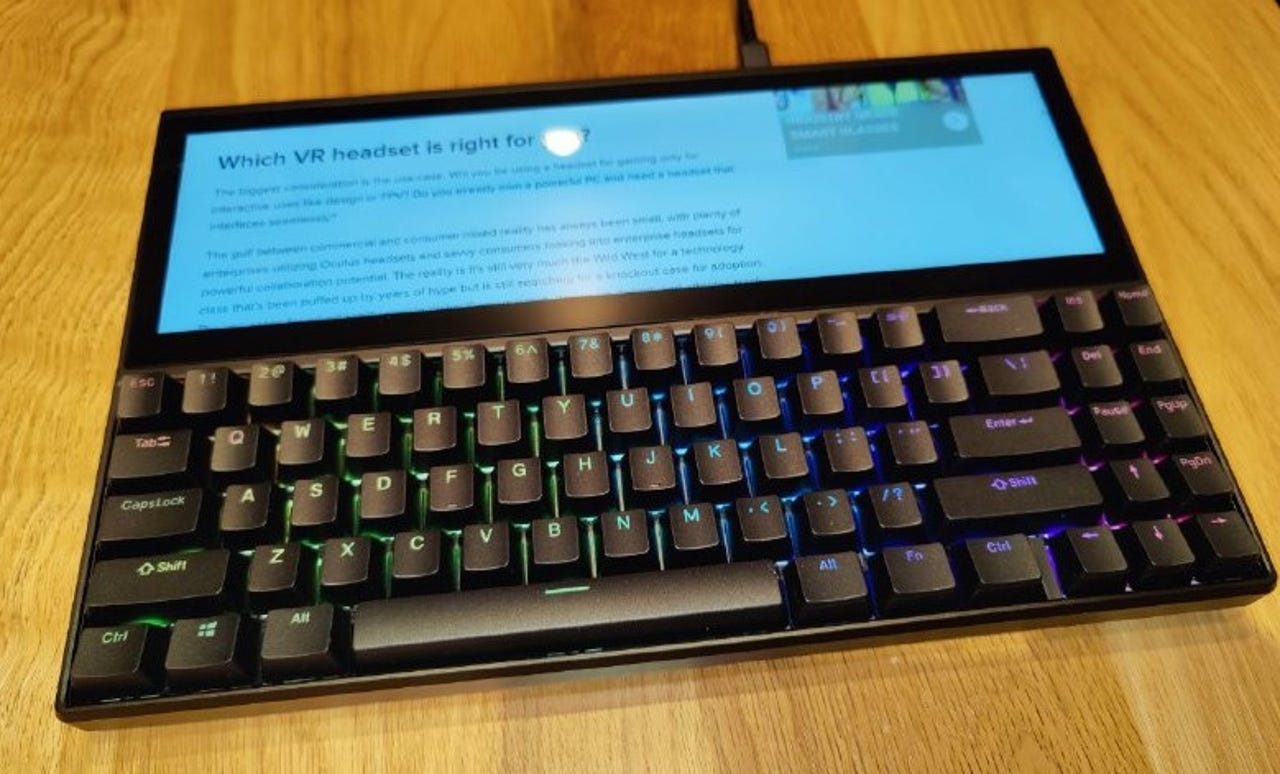'ZDNET Recommends': What exactly does it mean?
ZDNET's recommendations are based on many hours of testing, research, and comparison shopping. We gather data from the best available sources, including vendor and retailer listings as well as other relevant and independent reviews sites. And we pore over customer reviews to find out what matters to real people who already own and use the products and services we’re assessing.
When you click through from our site to a retailer and buy a product or service, we may earn affiliate commissions. This helps support our work, but does not affect what we cover or how, and it does not affect the price you pay. Neither ZDNET nor the author are compensated for these independent reviews. Indeed, we follow strict guidelines that ensure our editorial content is never influenced by advertisers.
ZDNET's editorial team writes on behalf of you, our reader. Our goal is to deliver the most accurate information and the most knowledgeable advice possible in order to help you make smarter buying decisions on tech gear and a wide array of products and services. Our editors thoroughly review and fact-check every article to ensure that our content meets the highest standards. If we have made an error or published misleading information, we will correct or clarify the article. If you see inaccuracies in our content, please report the mistake via this form.
Ficihp Multifunctional Keyboard offers the second screen of your cyberdeck dreams


Ficihp K2 Multifunctional Keyboard
When I wrote about the ASUS Zenbook Pro Duo late last year, I mentioned the Ficihp Multifunctional Keyboard, which takes the functionality of that laptop's lower deck -- the combination of a keyboard and wide-but-short (32:9 aspect ratio) 12.6" touchscreen -- and makes it an accessory to any USB-C equipped phone, tablet, or 2-in-1s (as well as traditional clamshells if you don't mind having two keyboards taking up space).
With its laptop-like weight and thickness, ample footprint and lack of a battery, the product makes no nod to portability like the folding keyboards in my last column. It even hosts two USB-A connectors. That said, it can be used with smartphones for a more desktop-like experience, particularly if they host a windowing environment like Samsung's DeX. In this sense, the Ficihp acts like the "laptop shell" devices I wrote about in early 2020, albeit in a modern update to the cyberdeck-like form of the pioneering TRS-80 Model 100.
While it's unlikely that the designers of the USB-C standard anticipated the likes of the Ficihp, the device is a perfect match for the versatile connector. Attach it to a PC, Mac or Chromebook and, assuming your cable supports video functionality, the keyboard and display activate. After that, the experience can offer many of the advantages of the Zenbook Duo's second display, providing some of the flexibility of a second display without taking up the horizontal desk space that one requires. However, since the Ficihp lacks a second USB-C connector, it can't be daisy-chained the way many portable monitors can, and thus requires using a dedicated USB-C connector on the host device versus one that could do double duty of video out and power in as many portable monitors allow.
Unlike the Zenbook Duo's integrated second display, you can move the Ficihp keyboard around for more placement flexibility. On the other hand, the Fichip's 1920x515 display can't match the brightness, contrast, or resolution of ASUS's stunning OLED display. The Ficihp also can't take advantage of the display utilities that ASUS makes available on its notebook, which include instantly blanking or turning off the second display if it's not needed or distracting. The Zenbook Duo also allows the second display to tilt forward at a greater angle than the Fichip does, even with the latter's riser feet. While this isn't much of a problem if you're using the Fichip's screen for occasional reference or palettes, a screen hinge would go a long way toward improving usage comfort.
ZDNET Recommends
During its crowdfunding campaign, Ficihp offered both scissor-switch (K1) and mechanical versions (K2) of the keyboard. While both versions provide the standard gaming keyboard LED light show displays, the K2, which uses Gateron switches, is even larger than the substantial K1, and accommodates a full keypad as well as replaceable keycaps. Despite this, it's slightly less expensive and was the only version in stock at the company's website as of this writing.
Continuing the experimentation with the 32:9 aspect ratio displays, Lukos recently launched a standalone 4K touchscreen available through Indiegogo InDemand after raising almost $200,000 on Kickstarter. It features an adjustable tilt angle and cover that doubles as a stand. However, its low profile is disrupted by top-mounted connectors and its $419 promotional price could net a full-height portable 4K display and costs significantly more than the Ficihp keyboard combo (which has a lower resolution). If one were willing to piece together the processing (perhaps a PC stick) and input options, it could be the ultimate screen for coach class airline seats.